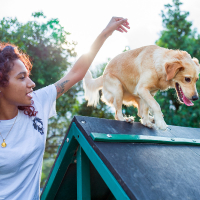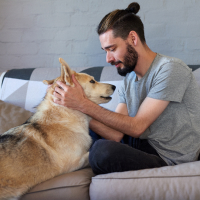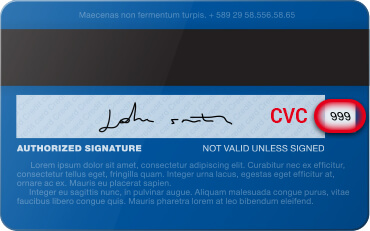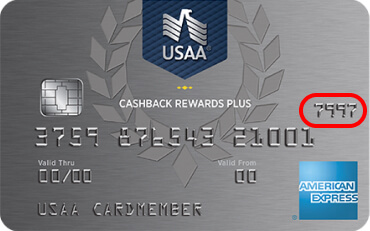The "Perfect Puppy in 26 Days" course
We will help your puppy grow into a happy and obedient dog.
What will I get with this course?
This course of 26 videos covers ALL the secrets of raising your pup. Socialize your pooch, teach him important skills, learn essential commands, and solve behavior issues.
What will my puppy learn in 26 days?
Your pup will learn all the essential skills like sit, stay, potty training, crate training, loose leash training and many more.
Is this course helpful for preventing behavior problems?
Absolutely! With this course you’ll learn how to address biting, chewing, separation anxiety, whining, jumping up, and other problems dog parents may face.
Can a newbie dog parent handle training on his own?
Sure! All our videos come with clear step-by-step instructions and are easy to follow even for a newbie.
Course program
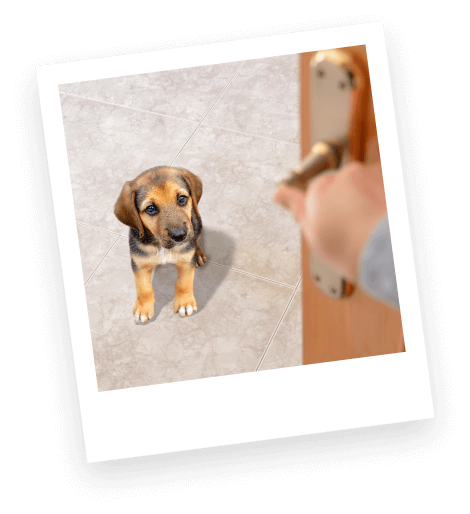
Essentials
Training your puppy to stop biting & nipping
In the first lesson, you’ll learn how to correctly address your pup’s nipping as it is one of the most common concerns of puppy parents.
Potty training
Potty training is a very important step for living in harmony with your pet. In this lesson, you’ll discover how to set your puppy up for toilet success.
Socialization
Proper socialization is essential for every puppy. Well-socialized puppies grow into confident, happy dogs that feel calm and comfortable in all environments.
Teaching your puppy their name
Teaching your puppy their name is one of the most important things you can do when you get a new puppy — it’s the basis for successful training and a great relationship.
Getting used to alone time. Part 1
Every dog parent wants their puppy to be calm and safe when they’re left at home alone. This lesson explains the fundamentals of how to train your puppy for long periods of solitude.
Getting used to alone time. Part 2
This lesson is a continuation of alone time training for your puppy. It includes a new exercise that helps them cope when you’re not around.
Introducing your puppy to new surfaces
This lesson will help you get your puppy used to unfamiliar surfaces, which is a crucial part of their overall socialization.
Training
Shifting focus from one toy to another
This exercise teaches your puppy to shift their focus and to pay attention to what you are offering them, even in moments of excitement.
The “Shoo-Shoo” game
The «Shoo-Shoo» game helps to drive your puppy’s interest in training and interacting with you. With the Shoo-Shoo game, training becomes more fun for your puppy as they hunt down treats.
The “Check” command
This is a very simple and useful command which helps your puppy to explore an environment without fear.
A self-control “Zen” game
Almost all dogs are obsessed with food and it’s quite challenging to get your puppy’s attention when they see something tasty. In this lesson, you’ll learn how to teach your puppy not to lose control when they see food.
Nose target. The “Touch” command
A Nose target is a very easy exercise that draws your dog’s concentration to your palm. Perfecting this exercise will help you to teach your dog many useful commands in the future.
The “Leave it” command
The “Leave it” command is an important tool for teaching your puppy impulse control, which is critical for their overall health and wellness. The “Leave it” command will keep your puppy safe from any potentially dangerous items they might pick up and swallow.
Collar training
This lesson covers how to get your puppy used to a collar, and the feeling of being in a collar. It is very important to familiarize your puppy with new devices gradually, avoiding situations when your pup can get scared.
Harness training
This lesson explains how to harness train your puppy. Harnesses are good training tools for puppies that haven’t yet learned to walk on a leash, as they’re generally less traumatic.
The “Look at me” command
In this lesson, we are going to talk about the “Look at me” game. This exercise is very simple and useful, especially for dogs that don’t pay much attention to their humans during walks.
The “Find it” command
This lesson covers the “Find it” command — the simplest visual search game that teaches your puppy how to distract from stimuli.
The “Give it” command
This lesson shows you how to teach your puppy the “Give it” command. If you want your dog to be interested in giving things to you, you’ve got to show them the benefits of giving.
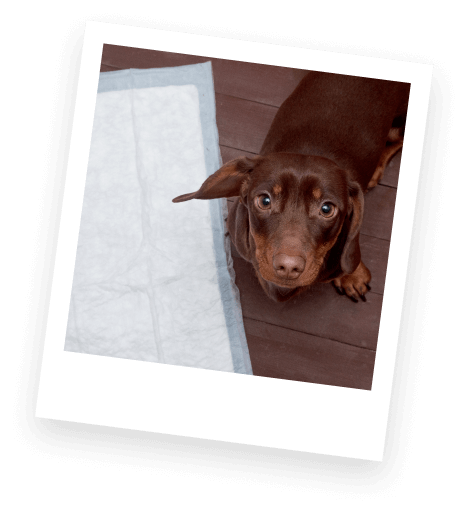
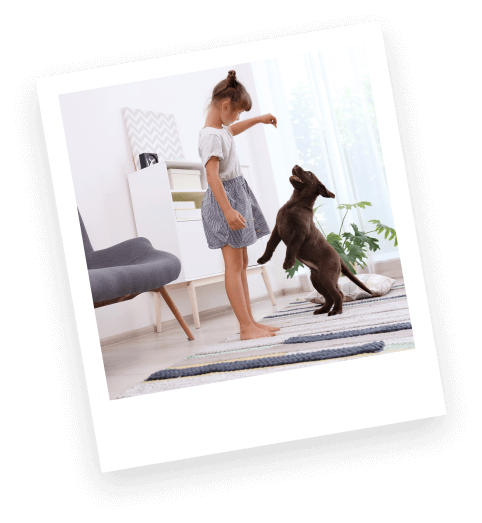
Raising a puppy
Attention markers
This lesson explores a signal-marker, which is used to get your puppy’s attention. You can use this in the future to get the puppy’s attention in any situation, no matter what is going on.
Crate training your puppy in 10 steps
This lesson explains how to crate train your dog. Crate training may take some time and effort, but can be useful in a variety of situations.
Effective dog training methods: luring
In this lesson, we explore a very important dog-training technique — luring. Once you and your dog master luring, you can use it as the base of almost any new command or trick.
Grooming essentials. How to brush your dog’s hair
Many dog breeds require regular brushing and combing in order to keep their coat and skin healthy and looking good. Before you can dive in, you’ll need to familiarize your puppy with grooming so that it doesn’t prompt a fear reaction.
Grooming essentials. How to trim your dog’s nails
In this lesson, you’ll learn how to familiarize your puppy with a nail clipper. It is very important to gradually ease your dog into using a nail clipper to avoid fear.
Preventing a puppy from begging for food
In this lesson, we’ll discuss ways to teach a dog to not beg for food when we’re eating. We’ll cover how to teach your dog not to put their front paws on the table, jump on the table, beg or whine, while we’re enjoying a meal.
Correctly praising your puppy
Learning how to praise your puppy correctly is important to ensure they love communication and interaction with you.
Habituating a puppy to human touch
In this lesson, we are going to talk about how to habituate your puppy to your touch. Life can throw a variety of different situations at us. For example, when at a dog show or at a vet hospital, you may need to put your dog on a table. Whatever the circumstance, your pet should be calm about you holding them in your arms or touching them in general.
then $19.99 / 1 month
Frequently asked questions
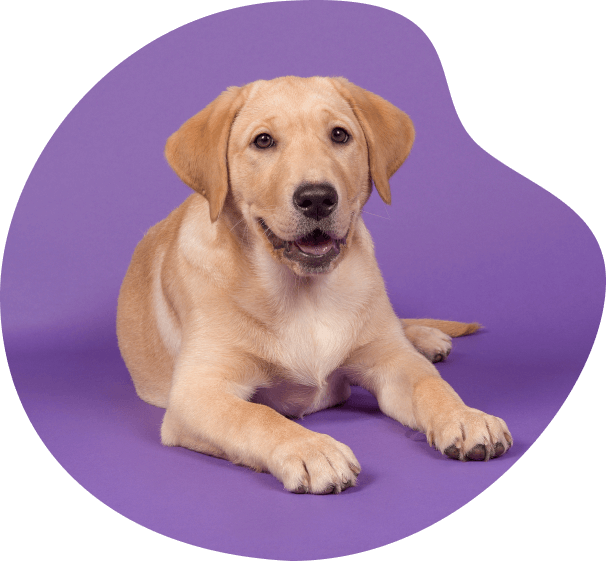
The main aim of the course is to help you raise an obedient, well-mannered dog who is a pleasure to live with.
All our courses are based on positive reinforcement —the most humane training method which is getting more and more popular around the world. Caring dog owners want to raise their pets without resorting to punishment, pulling or shouting at the dog. That’s why they choose positive reinforcement. What’s more, science-based, force-free training methods are proven to be more effective and they ensure that you develop a much healthier, happier relationship with your dog.
Yes! Our video lessons come with clear step-by-step instructions and even a novice dog owner can follow them. In addition, self-training helps to strengthen the bond between you and your dog.
The sooner you start training your dog, the better. That is, start training your pet right from the moment he arrives at your house. However, it doesn’t mean it will be impossible to train your dog later; dogs are smart and they can learn at any age. It will only take more time to learn and practice new commands.
It is very important to learn how to give commands and praise your dog correctly. Start with the simplest and easy-to-follow exercises and games.
You should also understand what motivates your dog best and choose the best reinforcement based on that.
Watch our video lessons to understand what motivates your pet and find out which commands to teach your puppy or adult dog.
Don’t forget that dogs love to learn at any age.
Your dog may bark excessively for the following reasons:
- They try to manipulate you — they may ask for attention, beg for food or make you play with them. In these cases, do not reinforce your pet’s barking by interacting with them. Be patient as your dog is very likely to bark more loudly and more insistently. But without your reaction, this behavior will fade.
- Your dog is over-excited. In this case, you’ll have to work with your dog’s mental condition. You’ll need to teach your dog self-control and concentration and do some relaxation and anxiety-relieving exercises.
- Barking is your dog’s response to noises, whispers or any other loud sounds. In this case, record the disturbing sounds on your phone (or ask someone to reproduce them) and gradually familiarize your dog with those noises.
You can find a step-by-step guide on how to familiarize your dog with noises, self-control and relaxing exercises in our training courses.
Biting objects and even our hands is one of the ways puppies explore the world. And it is very important to teach the puppy to control the strength of his bite.
We never punish or scold the puppy for nipping, instead, we use the following method. When you play with your puppy, let him nip your hands. Continue playing until he bites especially hard. When he does, immediately give a high-pitched yelp, as if you’re hurt. The puppy should understand that you feel pain.
If yelling doesn’t help, and it makes your puppy even more excited, take time-outs and stop your interaction.
If you can’t cope with your puppy’s biting and nipping on your own, watch our step-by-step video tutorial.
If your dog doesn’t follow your commands, it means they are not quite clear about what is going on, what they should do and what the benefits of following your commands are. Or maybe the commands are too difficult for your dog at this stage of learning.
So what should you do in this case?
- First of all, learn the basic model for training commands which is both simple and effective, and follow it.
- Divide the learning of any command into several stages and choose the reward your dog likes the best.
- Learn the following scheme: a command ➡ a marker of correct behavior ➡ a praise ➡ a treat.
Don’t make training sessions too difficult or too long; make them short but regular.
Make sure the verbal marker of correct behavior is given at the exact moment your dog performs a desired action.
You can find the basic model for learning commands, training session rules and lessons on how to praise your dog right in our all-in-one video course.
What dog parents say about the EveryDoggy courses
